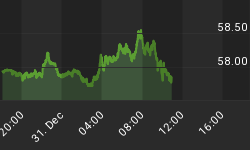The frequency of multi-day back-to-back down days so far in 2010 is a further indication of weakness and negative trend for the S&P 500.
The multi-day back-to-back down day frequency is greater than in each of the full years of 2003, 2004, 2005, 2006 and 2007; and is as great as the full year of 2002 (which was a down year), and is approaching the frequency in the full year of 2000.
This is not good news.
I discussed the issue and suggested the problem in a July article, but the current back-to-back down run makes the case stronger: http://www.qvmgroup.com/2010-07-07_SP500_DownRunFrequency.php
The image below shows the S&P 500 price range for each year 2000-2010. The simple cross shape of the price range for 2010 is a sign of indecision -- things could go either way -- a good reflection of the macro-economic situation, and the political situation.
Figure 1. S&P 500 Price Range (2000-2010)
The image also provides a table of frequencies of back-to-back down runs of 4 days or more. There have been five so far in 2010 covering 24 days. There were 5 in all of 2002 covering 24 days. There were 7 in 2000 covering 32 days. The other years had frequencies of 2-4 times over their full twelve months.
No one sign creates certainty about the future, but taken together different signs tell a story. This sign is a negative one that we think is fairly important.
A more conventional view of the S&P 500 trends uses moving averages as shown in the 5-year and 1-year daily charts below.
Figure 2. S&P 500 5 Year Moving Averages
Figure 3. S&P 500 1 Year Moving Averages
A higher frequency investor would be concerned about whether the price is above or below the 200-day moving average. That became a problem in May.
A lower frequency investor would be concerned about whether the 100-day moving average is above or below the 200-day moving average. That is a problem as of today.
In addition to moving averages, one can use linear regression to find best fit trend lines. The two attached images show the slope of the 200-day and 100-day best fit straight trend linesin their top panel.
The 100-day slope became negative in June, and the 200-day slope became negative on August 17th.
Looking at inter-market data, bond total returns are still handsomely beating stock total returns. Looking at Treasuries, the rates just continue to melt away. If investors had confidence in stocks, they would not be accepting the historically low rates on Treasuries:
3mo = 0.20%
1yr = 0.27%
2yr = 0.50%
10yr = 2.50%
In the midst of all this negativity, there are a few country funds (such as Chile, Malaysia, Indonesia, and Thailand) still showing strong up trends, as well as a few dozen of the S&P 500 constituents (mostly utilities, along with some names like McDonalds, Altria [former Philip Morris], and Campbell Soup), but in each case the daily number of those countries and companies has been declining.
Extreme caution is appropriate. Hold only positions for which you have strong conviction, patience and a time frame measured in months and years, not days and weeks.
Well covered, high dividend yield may provide some comfort and cushion, particularly if the yield is equal to or greater than your withdrawal rate, if you are in the draw down stage of life. If your primary concern is withdrawals, then some high yielding stocks may be appropriate if they cover your withdrawal rate, with price fluctuation being of secondary importance. However, if you are selling shares to make withdrawals, this is not a good time to own stocks.
The elections will probably be an inflection point, and it could go either way. Don't expect miracles. A new government may not be all that different than the old one. Election talk and legislative action are never quite the same.
There are some really big issues in flux. Will the current tax rates expire, be extended, or be phased out? Will healthcare legislation be repealed, left as is, or repealed and replaced with some other national program? Will California effectively go bankrupt by way of a federal bailout, and what would happen with the other state financial basket cases -- and how would markets absorb that event? Will the current government decide to assume the obligations of union pension plans as is being actively promoted in some quarters? Will Timothy Geitner be forced out, and if so, what would the next fellow be like? How far is the Federal Reserve willing to go with Quantitative Easing (printing money out of thin air) to buy intermediate-term Treasuries (with IOU's) from the Treasury to depress longer term rates now that they have no more bullets for short-term rates. How much farther is Obama prepared to go with government by emergency decree? Will China continue to slow? ..... and the list of near-term issues goes on.
Dry powder in the form of cash is not a bad idea.
















